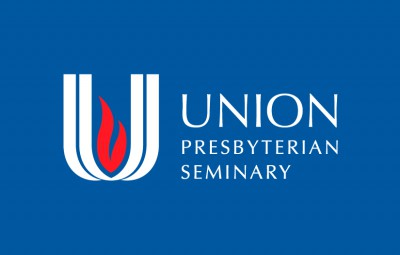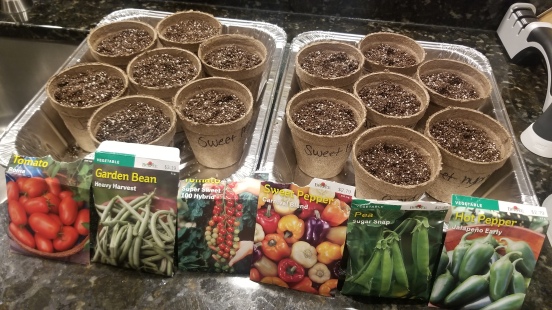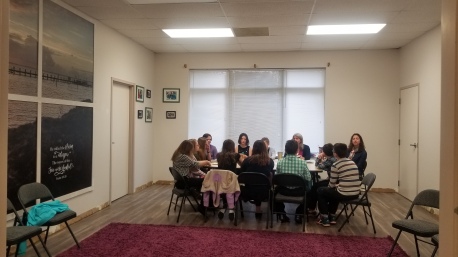
Four years ago, I started this blog as a way to reflect on the ministry I saw week to week, sometimes in drastically different settings, as a Church Relations Officers for Union Presbyterian Seminary. As I shared my stories within the office, we realized that they were stories which should be heard by as many as possible. They were stories of what I saw to be as challenging, influential, powerful ministries which, many times, were not fully seen or understood even within their own context. This is a blog about the way the Church is thriving and changing, meeting the needs of so many and challenging the norm even when that might be unpopular.
Two years ago, I accepted a new call but was asked to continue to write about what I was seeing and experiencing. I have missed my regular view into the incredible work of congregations throughout North Carolina, but I have treasured the continued and deeper view of what goes into creating successful and meaningful ministry on a daily basis. I have shared glimpses of what this continual, day to day ministry can be with the view that even the smallest things we do are important.
Today, I write the final installment of “Congregational Corner.”
I have thought about this blog for a few weeks now, wondering what I wanted to say, what I have learned along the way. What does all of this boil down to? Following a dinner with multiple generations of pastors, I think I figured it out –
The Church is reforming.
“Reformed and always reforming” is a motto of the Presbyterian Church (USA) that I have held tight to as I rationalize my younger, adventurous, and sometimes even challenging approach to ministry, but over the last few days I have spent time with this motto in light of what I have learned over the last four years, in light of what I learned at Union Presbyterian Seminary, and in light of what I am challenged with in ministry today.
I think back to the very first congregation I wrote about and the stories held within the dark, aged and creaking wood of the sanctuary. I think of the ecumenical Thanksgiving service in a small town in North Carolina, showing that a congregation which is open to a new experience can reform their community in love and grace. I think of the congregation seeking their place within the community, seeking ways to minister to a different demographic than when they began. I think of the congregations in transition, wondering what ministry will be in their next chapter.
So many congregations – almost 100 in my time as a Church Relations Officer – and so many ministry experiences spring to mind as I think about the ways we are already reforming and how we are still being called to reform.
There is no question that as God’s Church, as the people of Jesus Christ, we are being challenged today in a multitude of ways. As God’s creation develops and changes, so must the way that we discern and proclaim God’s word. A change in method is not a change in content, and I think that this fear might be what holds us back so often.
If I have learned anything in the last four years, it is that every single aspect of ministry, every single situation, every single person requires a different and intentional approach. Ministry within God’s creation is not a once size fits all, or even most. I think about all that I saw and learned on the road for Union and while much of it has guided my approach to ministry, no approach can be fully replicated and lead to a nourishing, fulfilling, successful ministry in a different venue.
Thinking about the Church and the many leaders I regularly meet, my fear is that too many have fallen into the trap which comes with successful ministry – it worked in one community and situation, so why not take the same approach in the next community and ministry opportunity?
If we don’t take into account the individual people and situations to which we are ministering to, and listen for how God is calling us for that specific opportunity, we become stagnant. We miss a chance for relationships to grow, we miss a chance for voices to be heard, we miss a chance for God’s love and grace to be fully shared; we truly become “The Frozen Chosen” whom so many Presbyterians joke about.
Everyday ministry in a consistent setting can drag a leader into a routine all too quickly. It is easiest to make one plan and follow it week to week, month to month, year to year. I have found great comfort in developing a routine. However, we must take time to regularly step back and ask the hard questions, to find out what individuals need NOW rather than yesterday, and find ways to work with one another so that we can grow together and continue to share God’s Word in the world. As long as we do this, I am convinced that we will begin to more fully see the Kingdom of God rather than worrying about a dying Church.
I find myself laughing a bit at the dichotomy between the two taglines which follow us Presbyterians around – “The Frozen Chosen” and “Reformed and always reforming.” If you think about it, the two cannot coexist… so which will you follow?
I choose to reform every single day (plus, it seems impossible to freeze right now, anyway!)
Rev. Jordan B. Davis (M.Div. ’14)
Associate Pastor, Youth & Young Adults
Kirk of Kildaire, Presbyterian
**While this is the official close of “Congregational Corner”, Jordan will continue to reflect on ministry through her personal blog. You are invited to follow her at https://revjordanbdavis.blogspot.com/**








 Every year, I watch the posts fly about what individuals are “giving up” for Lent. The crash diets and motivation to finally clean out the closets are worthy of being posted on social media, but I question if they really challenge us to understand the meaning of Lent and the sacrifice which we remember during Holy Week. As I pondered how I would approach this Lenten season, I decided that I wanted to turn things around in my own life and rather than give something up or give something away, I will take something on, just as Christ took on the sins of the world in his own death.
Every year, I watch the posts fly about what individuals are “giving up” for Lent. The crash diets and motivation to finally clean out the closets are worthy of being posted on social media, but I question if they really challenge us to understand the meaning of Lent and the sacrifice which we remember during Holy Week. As I pondered how I would approach this Lenten season, I decided that I wanted to turn things around in my own life and rather than give something up or give something away, I will take something on, just as Christ took on the sins of the world in his own death.
 We have a space where the teenagers can be themselves, where emerging adults can hold onto their childhood memories. We have a space where exhausted students can relax and where aspiring athletes can run the hallway. Their faces line the walls and their thin places take them away from the every day. The struggling teenager finds encouragement as they look in the bathroom mirror, rather than being faced with their perceived flaws. The emerging leaders gather around the table to dream and plan for ministry to and with their peers.
We have a space where the teenagers can be themselves, where emerging adults can hold onto their childhood memories. We have a space where exhausted students can relax and where aspiring athletes can run the hallway. Their faces line the walls and their thin places take them away from the every day. The struggling teenager finds encouragement as they look in the bathroom mirror, rather than being faced with their perceived flaws. The emerging leaders gather around the table to dream and plan for ministry to and with their peers.